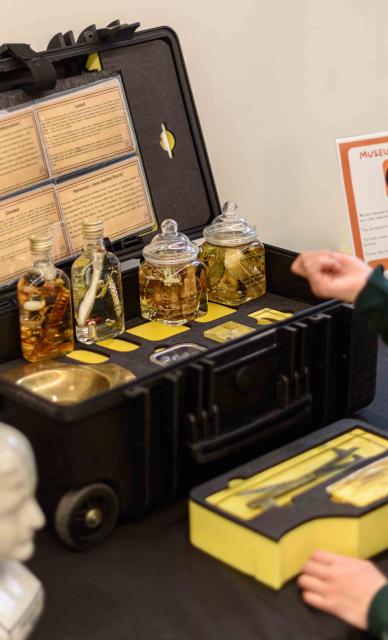Support us
As a charity we rely on your donations to fund our free exhibitions, school activities and online resources
The centaurs were a mythical race inhabiting the mountains of Thessaly and Arcadia.
As so often, centaurs have several genealogies. Ixion, king of the Lapiths, murdered his father-in-law, but, to save him from revenge, Zeus rescued him. However, Ixion then tried to woo Zeus’s wife, Hera, so Zeus made a cloud resembling Hera, and by it Ixion became the father of a man-horse monster, which, the poet Pindar says, consorted with Magnesian mares on the slopes of Mount Pelion and so was the progenitor of the centaurs. Other versions give their descent from Apollo and Hebe, or from Peneus, Thessaly’s chief river.
The centaur myth probably originated when people first saw an equestrian tribe from the north settling in Thessaly at a time when, in Greece, horses were not ridden. Sir William Smith considered that the name kentauros (‘bull-spearer’) suggests the hunting of cattle by Thessalian cowboys. Like satyrs, centaurs represented unbridled animal lusts, and their combats with the Lapiths, and with Herakles and his wife, stood for strife between barbarism and civilisation.
Chiron, however, was strikingly different from other centaurs. His descent is variously given as from his mother Philyra, from Ixion, Poseidon or even from Kronos. Chiron lived on Mount Pelion with his wife, Chariklo, and was wise, kind and civilised. He is often represented in early Greek art as having a body that is wholly human, but attached at the rump to the chest and hind legs of a horse, and clothed with a tunic and, often, a cloak.
He was instructed by Apollo and Artemis and became famous for his skill in medicine, music, prophecy and gymnastics. In turn, he had as pupils in these skills many distinguished heroes, including Herakles, Achilles, Jason and Asklepios. Theophrastus (372–287 BC), ‘the founder of botanical science’, and Dioscorides, a physician who wrote a great treatise on materia medica in the first century AD, have given us some examples of herbs traditionally said to have been used by Chiron. They include species of the genus Centaurea (named after Chiron), Elecampane (‘the all-heal of Cheiron’) and Black Bryony – which are British, as well as Greek, wild plants.
When Herakles was fighting wild centaurs, one of his poisoned arrows accidentally wounded Chiron and caused him such agony that he longed to die. He could not, however, do so until he had passed his immortality to Prometheus. Zeus then raised him to the stars as the constellation Sagittarius. Galen (129–215 AD), who learned and taught medicine at the Asklepieion at Pergamon, accepted Chiron as an early teacher of medicine.

Support us
As a charity we rely on your donations to fund our free exhibitions, school activities and online resources